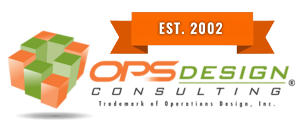Accurate, real-time inventory tracking has become essential for operational efficiency and customer satisfaction. Two technologies often considered for this purpose are Radio Frequency Identification (RFID) and Near Field Communication (NFC). While they share some core similarities—both are wireless, both use tags to track items—they serve very different roles in practice.
Understanding how these technologies differ and where each excels can help businesses select the right system for their unique needs. This guide outlines the main differences, advantages, and ideal use cases for both RFID and NFC in inventory management and beyond.
NFC and RFID Understanding the Basics
RFID (Radio Frequency Identification) is a mature, proven technology widely used in logistics, warehousing, retail, and manufacturing. RFID systems consist of tags (attached to items), readers, and antennas. Depending on the system’s frequency—low, high, or ultra-high—RFID tags can be read from a few inches to hundreds of feet away. Passive RFID tags (which have no battery) are common and cost-effective, while active RFID tags (which include a power source) offer longer range and greater functionality.
NFC (Near Field Communication) is a more recent technology built on high-frequency RFID standards. It enables very short-range communication (typically under 4 inches) and is designed for one-to-one interactions. NFC is commonly used in consumer-facing applications like contactless payments, secure facility access, and smart product packaging. Unlike most RFID systems, NFC tags can often be read using smartphones and tablets without the need for specialized readers.
Key Differences Between RFID and NFC
1. Scanning Capabilities
RFID: Capable of scanning multiple tags simultaneously. This bulk scanning capability is a major advantage in environments like warehouses, where thousands of items need to be identified and counted quickly. A single reader can scan an entire shelf, pallet, or container in seconds.
NFC: Limited to one tag at a time. The user must hold the reader (typically a smartphone) very close to the tag for the transaction to complete. While slower, this makes NFC ideal for precise identification tasks where accuracy and control are essential.
2. Scanning Range and Line-of-Sight
RFID: Depending on the system design, RFID readers can capture data from several inches to over 600 feet away. RFID also supports scanning through materials such as cardboard, plastic, and fabric, eliminating the need for line-of-sight visibility. This enables passive tracking of assets as they move through a facility or supply chain.
NFC: Requires extremely close proximity and a direct line of sight. While this limits NFC’s use for bulk or remote tracking, it allows for highly secure and intentional interactions—ideal for point-of-sale systems, electronic ticketing, or consumer product engagement.
3. Infrastructure and Hardware
RFID: Typically requires fixed or handheld RFID readers, antennas, and sometimes a supporting server infrastructure. It’s best suited for environments with a stable physical layout, like warehouses, factories, or large retail operations.
NFC: Offers lower infrastructure costs by leveraging smartphones or tablets as readers. It’s ideal for field teams, mobile employees, or retail staff who need quick access to item-level data without investing in specialized scanning equipment.
4. Security and Data Protection
Both technologies offer strong security features, including tag encryption, authentication protocols, and secure data exchange.
NFC tends to have an edge in consumer-grade security, due to its widespread use in mobile payments and identity verification. NFC tags can also be dynamically linked to secure cloud systems via mobile apps, making them popular in applications requiring user authentication or data logging.
RFID security has improved significantly, particularly with modern UHF tags that support advanced encryption and secure reader-tag authentication.
5. Cost Considerations
RFID: While the cost of RFID tags has dropped significantly, the total cost of ownership still includes infrastructure, installation, and ongoing maintenance. For large-scale operations, however, the price is justified by the efficiency and automation benefits.
NFC: Generally, it is more affordable to deploy at a small scale or for specific item-level tasks. Since most smartphones can read NFC tags, hardware costs are minimal, and tags themselves are inexpensive, particularly in low-volume deployments.
Use Cases: When to Use Each Technology
RFID is ideal for:
- High-volume inventory environments such as warehouses, manufacturing floors, or distribution centers.
- Bulk scanning of multiple assets at once.
- Real-time location tracking of assets, tools, vehicles, or materials across vast areas.
- Automation of routine inventory tasks, reducing manual labor and human error.
- Returnable container or pallet tracking in logistics networks.
NFC is ideal for:
- Retail product authentication, where consumers can tap their phones to verify a product’s origin or scan a label for more information.
- Secure asset tracking in healthcare, where item-level detail and privacy are essential.
- Tool and equipment check-in/check-out systems, especially when paired with mobile devices.
- Smart packaging or digital marketing, where brands offer consumers added value or interactivity through tagged products.
- Mobile workforces, where portability and ease of use are critical.
Making the Right Choice
Selecting between RFID and NFC is not just about the technology; it’s about how the technology aligns with your operational goals, workflows, and scale. RFID offers superior efficiency and scalability for industrial applications and large asset volumes. NFC, on the other hand, provides better control, user engagement, and ease of deployment, particularly when interaction with individuals or smartphones is required.
In some cases, a hybrid approach may offer the best results. For example, an organization may use RFID for bulk inventory tracking in its warehouse while using NFC for employee tools or customer interaction at the product level.
Final Thoughts
RFID and NFC are both mature, reliable, and increasingly affordable technologies. Each brings unique strengths to the table, and their usefulness continues to grow as more industries embrace digital transformation and automation.
Choosing the right one depends on your specific needs: speed, volume, precision, security, mobility, and budget. With a clear understanding of how each technology operates, you can make a strategic decision that improves visibility, boosts efficiency, and supports the long-term scalability of your operations.


